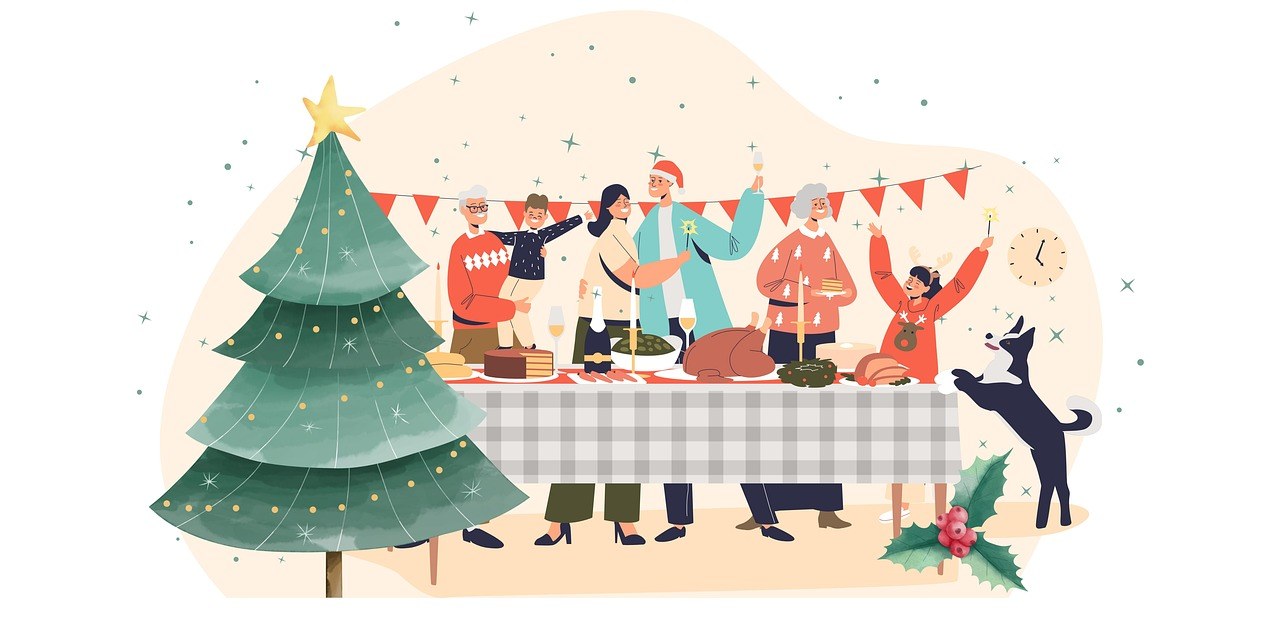Ask a dozen people to describe falling in love and you’ll hear a dozen different stories. Some compare it to a dizzying drop on a roller coaster, others to a slow sunrise that takes its time. That range is normal – falling in love is personal, elastic, and colored by your history, your timing, and the person in front of you. Even so, there are shared textures and telltale rhythms that help you recognize the real thing. This guide untangles those patterns so you can notice how falling in love moves through your mind, your body, and your daily life without forcing your experience into someone else’s script.
The Mind Behind the Rush – What Changes Upstairs
When you’re falling in love, your brain doesn’t simply carry on as usual. It prioritizes the beloved, rearranging attention and motivation. Feel-good chemistry kicks in – most people notice a buoyant mood and a kind of focused energy. That’s why falling in love can feel intoxicating without a drop of wine: your thoughts return to the same face, ordinary moments seem charged, and you catch yourself smiling at nothing in particular. None of this demands a medical chart; it’s enough to notice that your inner weather pattern changes, and the new climate makes room for tenderness, curiosity, and risk-taking.
Crucially, what happens in your head isn’t the whole story. Falling in love nudges your habits too. You might rearrange your calendar without thinking, linger over messages, or feel a new patience with the rest of life’s noise. The mind-body loop tightens – feelings spark behaviors, behaviors reinforce feelings – until daily routines quietly orbit around connection.

Attraction, Infatuation, and the Real Thing
Attraction is easy to recognize; it’s the lightning strike that can jump between strangers. Infatuation adds obsession – a glamorous sheen that may or may not survive daylight. Falling in love, however, deepens when attention is returned. The difference shows up in how you both show up. If the bond expands beyond surface spark – conversation stretches late, values peek through, care becomes mutual – you’re stepping out of the shallow end. It’s not about grand gestures; it’s the steady warmth of reciprocity. Falling in love grows in that exchange, where interest is answered and the two of you include each other in a world bigger than looks alone.
That’s why one-sided pining rarely matures into anything solid. Without mutual care, infatuation burns hot and fades fast. Falling in love, by contrast, is sustained by shared curiosity, a widening trust, and small choices that keep weaving two lives together.
Timing and Distance
There’s no universal clock for the heart. For some, falling in love feels immediate – the connection arrives fully formed, and everything else aligns. For others, the feeling roots slowly as friendship gathers depth and reliability. Neither pace is superior; both are valid paths toward the same valley. What matters is the clarity that emerges over time: you start to know the person, not the projection, and you like what you learn.

And what about distance? Strong feelings can grow through screens and late-night calls, yet falling in love asks for real-world texture – how someone treats a tired barista, what happens when plans go sideways, how conflict gets repaired. If you haven’t shared actual days, you might be nurturing a beautiful idea. Once you meet, that idea either steadies into reality or dissolves – and that, too, tells you something honest.
How It Tends to Feel – Core Sensations
-
Beyond easy description. The heart rarely submits to tidy labels. Falling in love often resists neat language – you reach for metaphors because regular words feel too small. The mystery isn’t a flaw; it’s part of the experience.
-
A gravitational pull toward time together. You invent errands, stretch coffee into a walk, and look for reasons to share space. When falling in love takes hold, proximity feels less like a plan and more like a reflex.

-
A surge of courage. Colors seem brighter, obstacles lighter. Falling in love emboldens you – you apply for the role, call your sibling back, speak a little more honestly – as if hope itself has taken your side.
-
Not perpetual bliss. Joy is common, but so are jitters, doubts, and growing pains. Falling in love carries complexity; it stretches you, which can feel equal parts thrilling and uncomfortable.
-
Safety wrapped in excitement. You feel spark and ease at once – a rare pairing. The relationship is a place where you can relax your guard and still feel the tingle of possibility. That blend is a hallmark of falling in love.
Signs You’re Truly In It
-
They’re your first call. Big win, minor annoyance, ridiculous meme – you want them to know. The instinct to share first and fast is a classic sign of falling in love because your life now feels more complete when witnessed by them.
-
Ideas for time together multiply. You used to struggle to pick a restaurant; now you’re jotting down movies, recipes, parks, and rainy-day plans. Falling in love turns ordinary activities into invitations.
-
Your priorities shift without a drama. Work, friends, and self-care still matter, but you naturally make room. Falling in love doesn’t demand that you erase yourself; it quietly persuades you to organize your energy with the relationship in mind.
-
Curiosity becomes endless. You want their childhood stories, their odd opinions, their favorite failures. Falling in love turns biography into a page-turner – not to collect trivia, but to understand the person beneath the headlines.
-
Spontaneous smiles. Their name on your screen, their sweater on your chair, a song they mentioned – and there’s that grin. Falling in love makes delight easier to access, even on hard days.
-
Physical connection that fits. Chemistry isn’t everything, but it matters. When touch, consent, and communication align, intimacy amplifies closeness. Falling in love often enhances this compatibility because trust deepens the experience.
-
Their viewpoint carries weight. You don’t need to agree, yet you care what they think. Falling in love invites you to consider their take when you choose, not out of pressure but because their lens improves your own.
-
Wandering eyes settle down. You still notice beauty in the world, but your focus narrows. Falling in love makes the noise fade; the person you’re with becomes the center of your romantic attention.
-
Absence tugs at you. You don’t panic when they’re away, but you do feel the empty chair. Falling in love creates a thread of connection – you wonder how their day is going and look forward to next contact.
-
A lighter baseline mood. Nothing dramatic changes – bills exist, buses run late – yet you feel buoyed. Falling in love adds an inner lift that helps you move through ordinary stress with more patience.
-
Daydreams reroute. The fantasy band tour fades; now you picture shared breakfasts, inside jokes, and trips you might actually take. Falling in love gives imagination a practical map.
-
You ache when they hurt. Their flu feels unfair, their bad meeting irritates you on principle. Falling in love makes empathy more immediate – you want to ease their burden, not to fix everything, but to stand beside it.
-
Presence feels like home. You still need time alone and with friends, yet their company settles your nervous system. Falling in love offers a steadying sense of “I can be myself here.”
-
You can see a later. You don’t need an elaborate blueprint, but you can imagine holidays, projects, and the patient maintenance of a life together. Falling in love often carries that gentle forward tilt.
-
You like who you are with them. You notice more honesty, more generosity, a little more courage. Falling in love doesn’t complete you – it invites the better parts of you to come forward and stay.
-
Compromise feels natural, not costly. You adjust where it makes sense – switching seats, splitting chores – without keeping score. Falling in love reframes trade-offs as shared wins.
-
Rituals appear and matter. A good-morning text, a Thursday walk, a silly handshake – tiny traditions that turn time into texture. Falling in love often expresses itself in these repeatable comforts.
-
Repair becomes possible. Disagreements no longer signal doom. You learn how to pause, return, and apologize. Falling in love favors connection over victory, making reconciliation feel worthwhile.
-
Support shows up in action. They remember the interview date, you bring soup, each of you advocates for the other in rooms the other can’t enter. Falling in love translates care into behavior.
-
Vulnerability earns tenderness. You reveal the complicated chapters, and they handle them with respect. Falling in love is brave – it opens the door to being known and finds that you are still welcomed.
How Long It Takes to Know – And How You Can Tell
There’s no stopwatch on awareness. For some, the realization arrives in a quiet kitchen while washing mugs; for others, during a chaotic airport goodbye. Falling in love announces itself through a pattern, not a single moment – a series of choices that make the bond sturdier. If you’re unsure whether someone is falling for you, notice the dance of reciprocity. Do they meet you where you are? Do your efforts feel matched more often than not? Falling in love tends to echo – your affection returns to you in their language.
Can It Happen Without Meeting?
Distance can nurture connection – shared playlists, midnight conversations, small surprises in the mail. Yet falling in love eventually asks to be tested by real circumstances. How do you navigate fatigue, bad traffic, and miscommunications face-to-face? How do you solve minor problems when Wi-Fi doesn’t buffer? Those ordinary frictions reveal character. If the warmth you built from afar survives the messiness of real life, you’re not just chasing an idea; you’re living the beginning of something grounded.
Everyone’s Path Is Different – And That’s the Point
The texture of falling in love varies wildly. Some experiences feel cinematic – a rapid, breathless certainty. Others feel like the softest of arrivals, a calm yes that strengthens over months. It helps to trade stories with friends; their versions broaden your understanding and protect you from narrow expectations. Still, comparison has limits. What matters most is whether the connection supports your well-being: Do you feel safe being yourself? Do you grow? Can you laugh together on dull Tuesdays? Falling in love is precious precisely because it doesn’t copy-paste – it adapts to two specific people and the life they’re building.
Keep your definitions flexible and your attention honest. The signs above aren’t a test to pass, but a language to notice. If your days are slowly reorienting around kindness, curiosity, and shared effort – if your inner weather is sunnier and your brave voice is louder – you already know more than any checklist could tell you. Call it what you like: devotion, partnership, the long game. In simple words, it is love, and when you are falling in love, you feel it in the steadiness of your choices as much as in the flutter of your chest.